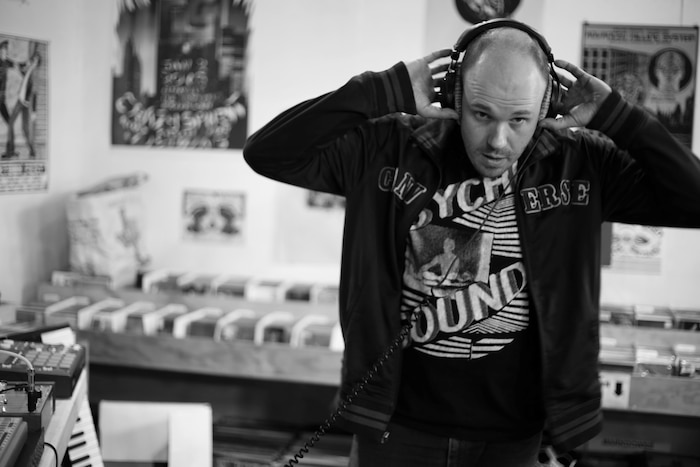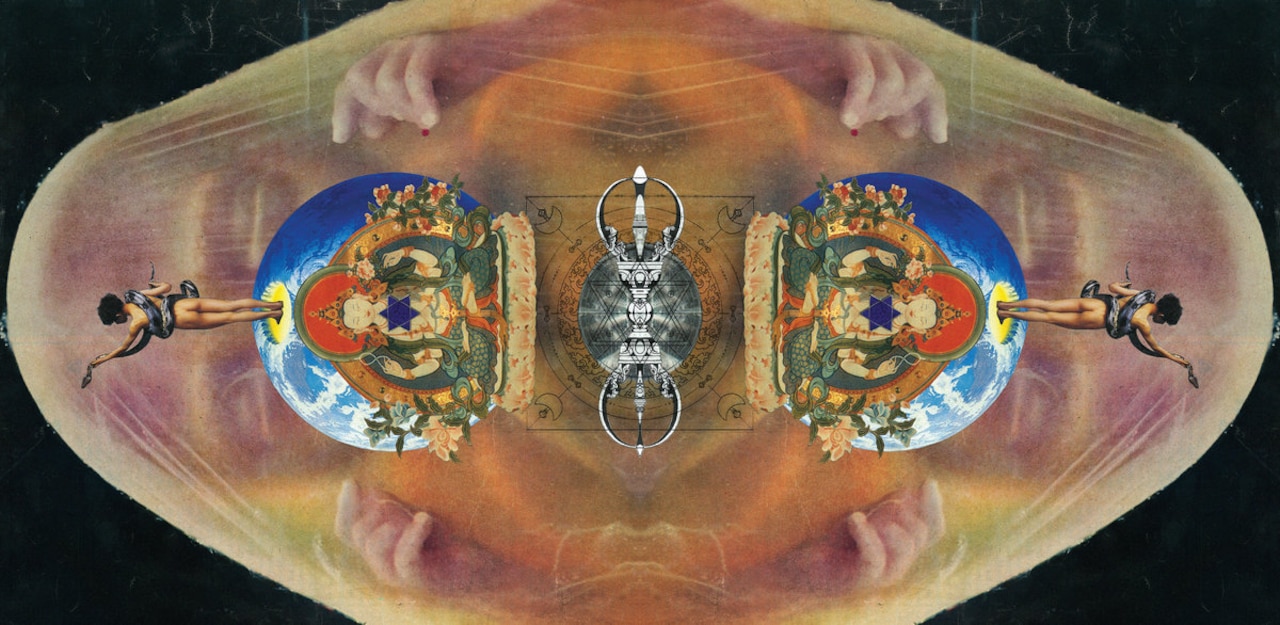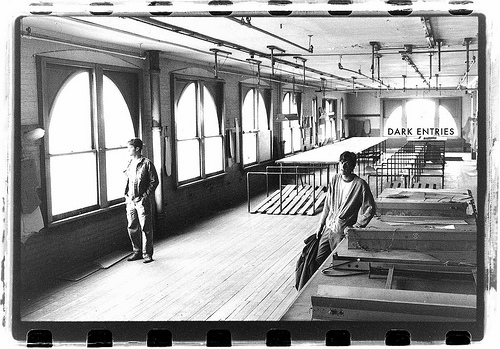Bill Converse and the Shape of Things to Come
The Austin-based raw synth auteur on his unlikely career evolution
Growing up in Lansing, Michigan, Bill Converse began DJing at the age of 11, getting schooled in the art of Midwestern raving before he’d even started high school. After moving to Texas at the age of 15, however, he was forced to hone his craft in relative isolation, resulting in a unique artistic vision centered around slow-brewing hardware jams. Over the past year or two, that vision has garnered its fair share of attention thanks to the Dark Entries label, which reissued his Meditations/Industry cassette and has since released a number of records, including his latest album, The Shape Of Things To Come. In this edited excerpt from an interview with Shawn Reynaldo on Red Bull Radio’s First Floor, Converse spoke about his early days making music and the evolution of his creative process.

You moved to Austin in 1998. When was it that you actually started making music? Was it while you were in Texas?
Yeah, it was a few years after that. Gear around here was pretty cheap and fairly available. I started slowly buying gear and have been doing so since.
For a long time you existed as sort of this very under-the-radar artist in Austin, but in the past year or so there’s been a swell of attention around your music, and you’ve put out a few records. Has your artistic vision been affected at all by the fact that people are paying attention now?
I’d say it’s a different kind of pressure, maybe. When I recorded everything for Meditations/Industry it was... before I had anything released, just the difference between having a microphone in front of you or not. Some people get kind of camera-shy. [It was] the same thing with releasing music for me. It just takes a little bit of getting used to. At this point I’m going along like I always have. It doesn’t really have too much of a bearing on what it is or why I do what I do.
Earlier this year, you debuted a new alias, Tide Eman, which I thought was an interesting choice given that you finally reached a point where Bill Converse was starting to get some recognition. What was the impetus behind starting this new moniker?
Max Ravitz, who runs Active Cultures, wanted to do a project with me but under a different name, which I thought was kind of cool. After having released music under my own name, I thought it’d be kind of fun to do something under some monikers to see how it goes. I had toyed around with the idea of coming up with a DJ name or something but could never come up with something that I liked for too long. I figured I’d pick something that I felt might grow on me... Something that I could flush out just by holding onto it for a little while. That’s what I’m in the process of doing. It’s moreso like an experiment for me. It’s still me. It’s still the music that I make.
You’ve mentioned in past interviews that your production methods generally involved turning on your machines and recording a track all in one take. Essentially, the Bill Converse tracks that we’ve heard in the past are jams. Was that still the case on this new album?
Yeah, a “jam” is sort of loosely correct. I definitely jam and there’s a lot of trial and error, and I like to experiment whether something will work out or not or sound good. I don’t know music theory very well. Rhythm is one thing, but coming up with melodies is a little more challenging, so I spend a lot more time not really jamming but figuring them out. By the time I’m hitting record it’s a performance kind of a jam. I have a fairly clear idea of how I want it to sound. I’ll do a take, try and get a certain arc of how I want the track to sound, try not to repeat myself or try to recognize patterns that I’m falling into, and either play with them or avoid them or just recognize them. It’s kind of a jam, but there’s a lot more than just being spontaneous. It’s not entirely spontaneous.
Most of your tracks are quite long and they generally don’t have a structure that feels like the music was made with DJs in mind. Does the idea of functionality factor into your songwriting process at all?
Maybe a little bit. When I’m making music it’s definitely a different practice from what I take to DJing. I love the music that I make and the music that I DJ, but they’re generally pretty different most of the time. My music’s a lot slower, generally. I’d like to DJ my own stuff a little more – it just makes so much more sense – so I’m trying to follow what I want to hear. It sort of takes me out of that realm. Sometimes when I’m recording a track, at least toward the ending of it I’ll be like, “OK, well, maybe this would be like a...” maybe a segue or something that could maybe be fun for mixing. “It would be interesting to see what somebody would play alongside these drums and this atmosphere.”
Do you ever make DJ edits of your own tracks so that you can play them out more easily?
I have not. I’ve thought about it. I’d like to make edits of plenty of tracks I’ve already made.
The new album is called The Shape Of Things To Come, which surprised me a bit because so many of the sounds in your music have this vintage, hardware sort of quality to them. Can you explain the meaning behind the title?
I played around a lot with the title, and for a long time the album title was going to be How They Have Changed and How They’ve Come to Be. I just thought that that was too wordy, so I settled on The Shape Of Things To Come. I guess the sounds in it are reflective of that. I had this thing going with a friend where he was making art and I was making tracks and we were sending them back and forth, sometimes in the form of feedback for art or music. I’d make music and he’d send me a piece of art. He also did the artwork on the inside, the gatefold of this record. I’d like to see something positive come his way, so that’s why I named the album The Shape Of Things To Come. That’s really a dedication to him.

Aside from this album for Dark Entries, you have another record coming out this month on Tabernacle called Salt Of Mars. It’s being billed as a mini-album, but it’s 51 minutes long, which is pretty much another album-length effort for most people. Was it created at the same time as The Shape Of Things To Come?
Actually, it’s a collection of some of my newest or most recent material, and some of my oldest. Just stuff that I happened to find. I was digging through a pile of old tapes and found some of the tracks that are on that, and then some of the stuff I recorded with a field recorder. It’s moreso like a collection of tracks I felt had a good spread. They’re kind of relative, I guess, with each other. I think it was six tracks and all the tracks are fairly long. I can’t help it – I always make long tracks. Fortunately, they wanted to do a double EP, so “By all means, let’s do it.” I’m excited about the project because it’s a different label, maybe some people that haven’t played or haven’t heard my music yet will hear it.

